Master (2022)
"Two African American women begin to share disturbing experiences at a predominantly white college in New England." - IMDB
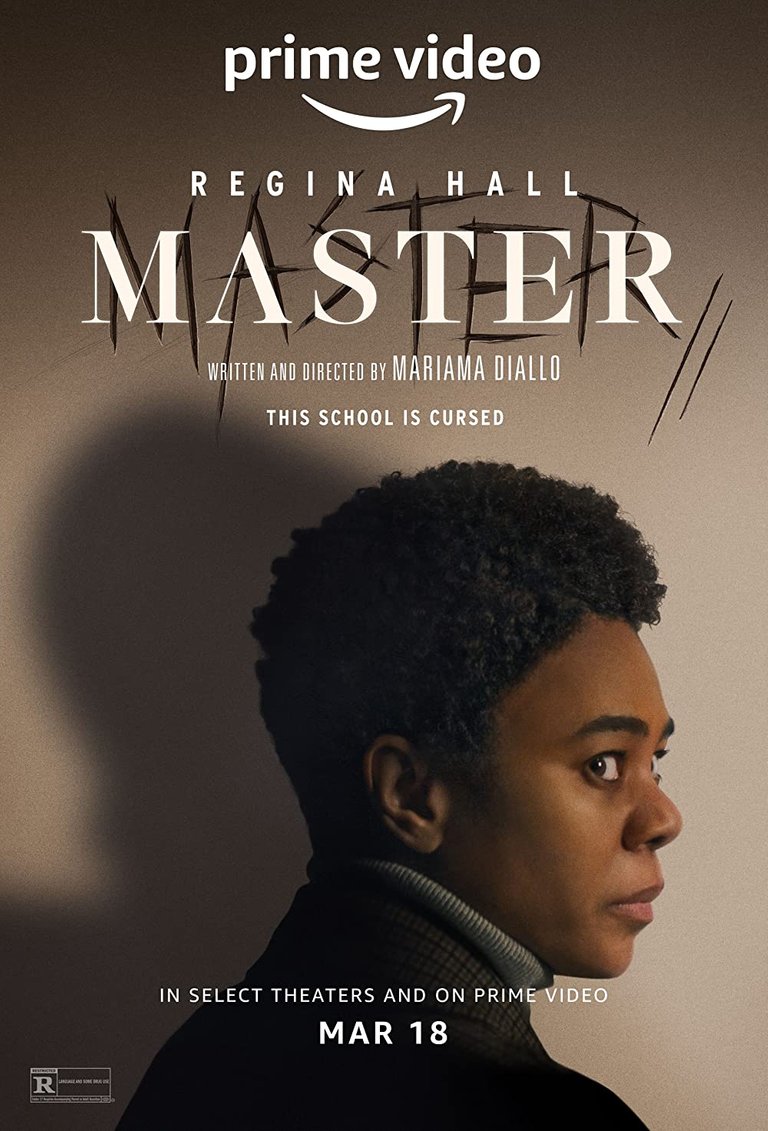
WHERE?
Amazon Prime Video
WHY?
I really enjoyed Jordan Peele's "Get Out" (2017) so, while not expecting an exactly similar violent dark-comedy, I was curious to see a movie about what looked to be two African American women dealing with paranormal manifestations of a New England University's history and culture of racism.
Here is a trailer.
WHAT?
What starts as a nuanced and intriguing exploration of black-on-white racism in elite American educational systems, peters out into an incomplete story lacking any resolution or closure.
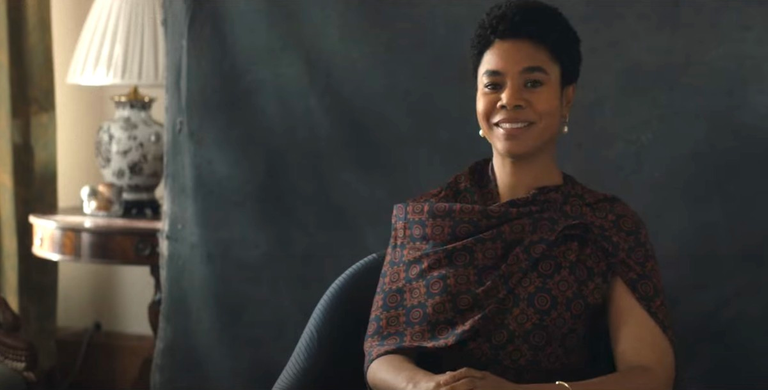
(Gail)
The movie revolves around Gail, Jasmine, and Liv -- three African American women at an elite New England American university called Ancaster and their experiences of paranormal and non-paranormal instances of racism. Gail is the newly elected master of Ancaster, well-earned after a career of numerous publications; Jasmine is a valedictorian teen from the suburbs of Tacoma starting her freshman year at a college where some students consider Harvard a "safety school"; and Liv is a racially ambiguous faculty member seeking tenure at Ancaster. While the young Jasmine encounters the most paranormal events of racism throughout her first semester, Gail also experiences a few herself, and Liv undergoes racism of the "mundane" nature compEWS to the other women's supernatural attacks -- since racism is not something any should call "mundane."
Gail who has just moved into the master's house on campus, tries to ignore the many hauntings of the past inhabitants' racism, including the ghostly ringing from the former slave's quarters. These come in the form of her finding racist ceramic pots in her kitchen, old phrenology papers in the attic comparing African Americans to chimpanzees, and repeated forms of inexplicable maggot infestations around the house. These incidents exist as traces of historical racism that she lives within while the maggots may perhaps be a metaphor, indicating such prevailing socially destructive beliefs are indicative of a form of figurative and literal rot.

(Jasmine)
Jasmine on the other hand, a young student, learns quickly after arriving on campus that her dorm room is the sight of a suicide by hanging in the 1960s of Ancaster college's first black female student. Unfortunately the white students on campus mythologize the event as being linked to the witch-hunting trials carried out on the grounds. They claim that a witch haunts anyone who lives in that room and that eventually, at 3:33 AM one night, "the witch stops tormenting her victim and finally takes you with her." Adding to the mystery of the legitimacy of the paranormal haunting she experiences, Jasmine also suffers from sleep-walking.
Her academic career starts off with discovering that her teacher Liv is grading her much more harshly than her white classmates and submits a complaint, which in turn casts hesitancy on Liv's application for tenure. At first, the horror of racism experienced by Jasmine starts with male classmates teasingly referring to her as female celebrities like Beyonce, Serena Williams, and Nicki Minaj. Next, she attends a college party of predominantly white students where she is at first refused at the door and then finds herself dancing in a crowd while her peers shout lyrics of a hip-hop song that repeatedly include the n-word. The next more directly threatening event in her college experience is after kissing her white roommate's blatantly racist crush and waking up to find someone has carved "LEAVE" into the door and tied a rope noose to the doorknob. Soon Jasmine begins losing time, attributed possibly to her sleep-walking condition, and experiences night-terrors of a goblin-like creature scratching her at night and attempting to lynch with her. Without spoiling too much, this mixture of paranormal and non-paranormal racism escalate in absurdly quick pacing that seems to rid Jasmine from the film as if the writers ran out of ideas or simply got bored with her.
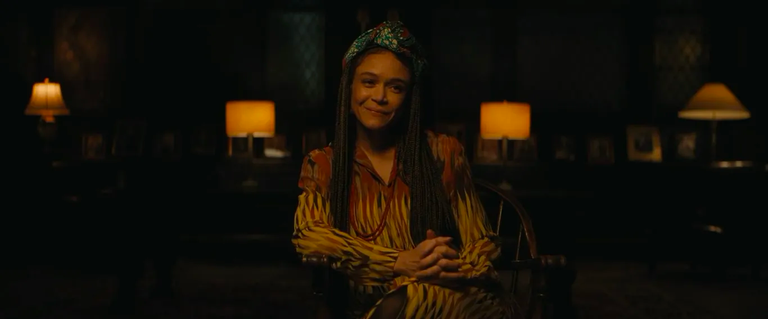
(Liv)
What to say about the character of Liv? My immediate thoughts upon seeing her were that she would be a Rachel Dolezal-esque character -- a white woman pretending to be black. She appears as an Afro-academic stereotype, a light-skinned black woman with braids and bright colorful patterns and exaggerated pretentious mannerisms, whose entire identity is built around a dramatized caricatured idea of "blackness." It is fitting that someone so focused on the appearance and idea of "blackness" have her own identity questioned by characters of irrefutable "blackness" -- Gail and Jasmine. Without spoiling too much, Gail is made to appear to have solved the mystery of the legitimacy of Liv's "blackness," but then the movies suddenly ends -- out of nowhere -- and the credits roll in the place of what should've been a very tantalizing third act to the movie.
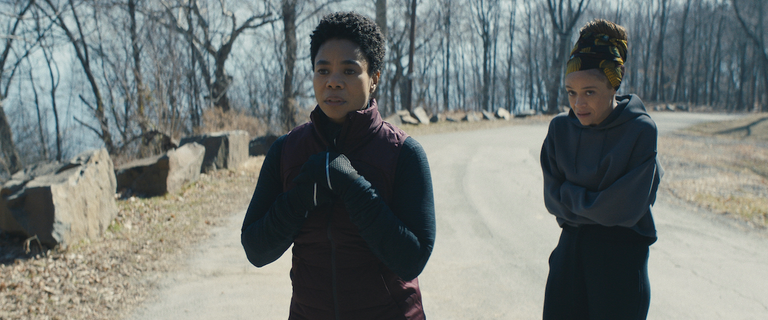
I think my main complaint about this 2022 Amazon Original Movie, "Master," is that, while starting off as a quality piece of subtle exploration of racism in elite American institutions mixed with supernatural horror, I couldn't clearly link the realistic drama and paranormal folklore in a meaningful way. The New England university of Ancaster has historical relevance as the sight of witch-hunting trials centuries earlier and supposed hauntings by a witch where the college's first black student died in the 60s. This combination left me wondering why the witch targets black students, why female black students, and if there are already two African American faculty members at this college why does only one of them experience a weaker supernatural disturbance? I wondered between the three -- Gail, Jasmine, and Liv -- if Liv was not haunted by ghosts because her "blackness" is made questionable to other characters and audiences watching the movie.
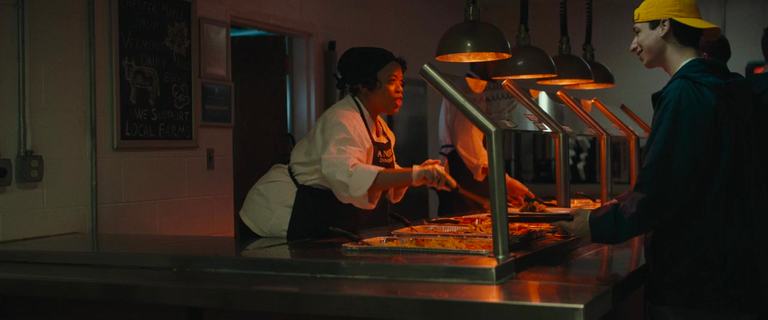
In 2022's "Master," there are quite a few interesting scenes. One example is of an African American lunch lady being exceedingly kind to white students while serving them food and then immediately losing her joviality when the young black Jasmine arrives to be served. Is it a scenario of class-tensions due to Jasmine being young enough to be a black student at a mostly white school, or is it an instance where a black character decides to let down their facade of friendliness once all white characters have vacated the stage?

We also get strange glimpses of many paintings and pictures. Some paintings depict old white gentleman that Gail and Jasmine see inexplicably walking the campus in real-life, while other times we are subjected to strangeness, like the picture above. There is an immediate focus at first on the presence of its wide nose and full lips which point to "blackness" but upon zooming out we see a distinctly white face, in historically white fashion of dress, with not black hands but white ones.
This movie, while not downright awful or innately broken, later revealed itself to be incomplete. So, after a little thought, here's the grade it's earned with me -- since it felt to be entirely missing its third act of closure or finality:
